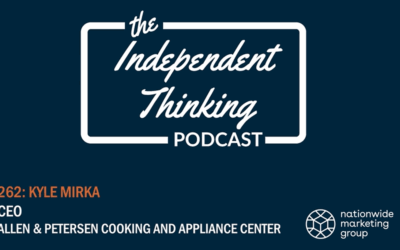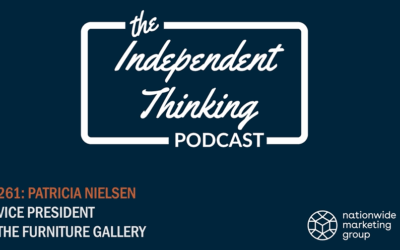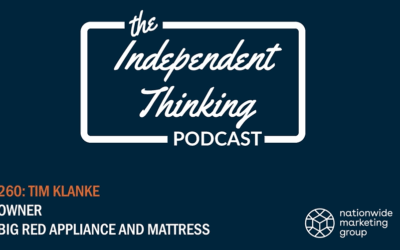Mindful spending is on the rise. And given the current economic landscape coupled with an election year, it makes sense, right?
According to a survey conducted by Think with Google, one-third of survey respondents are now researching more thoroughly before buying. Overall, 60 percent reported taking at least six distinct research steps before feeling comfortable enough to purchase a new or unfamiliar product or brand.
Where and how are these shoppers researching?
- 75 percent are searching for reviews and product details online
- 60 percent are specifically browsing online retailers’ sites and other online marketplaces for product information and reviews
- 67 percent are checking out brand-specific websites and apps
If you don’t have a website, these shoppers likely won’t give you their business because they will buy from a retailer who carries the product they want to purchase — either online or in-store. And how will they know what you carry if they can’t research it online?
Using Google Trends
Even if you do have a website and are intentional about growing your online presence, knowing what consumers are searching for can often seem like a mystery. While plenty of paid platforms exist to give you detailed insights on things like search terms, brand engagement and more, did you know that Google offers a free tool?
Google Trends.
Granted, it isn’t as robust or detailed as the paid options out there, but it does offer a higher-level view of keyword search interest with filters available for date range as well as top state, city and metro areas. Plus, for each keyword search, Google Trends includes related topics and queries people also search, ranked by “Top” or “Rising.”
For example, you can use Google Trends to see how the search for “best mattress for lower back pain” has performed over the past 12 months. The results will show peak times this longtail keyword phrase was searched over the past year. Note that Google Trends will default to the past 24 hours; however, you may find that there is not enough data to show results if you select a period less than the past 7 days or more.
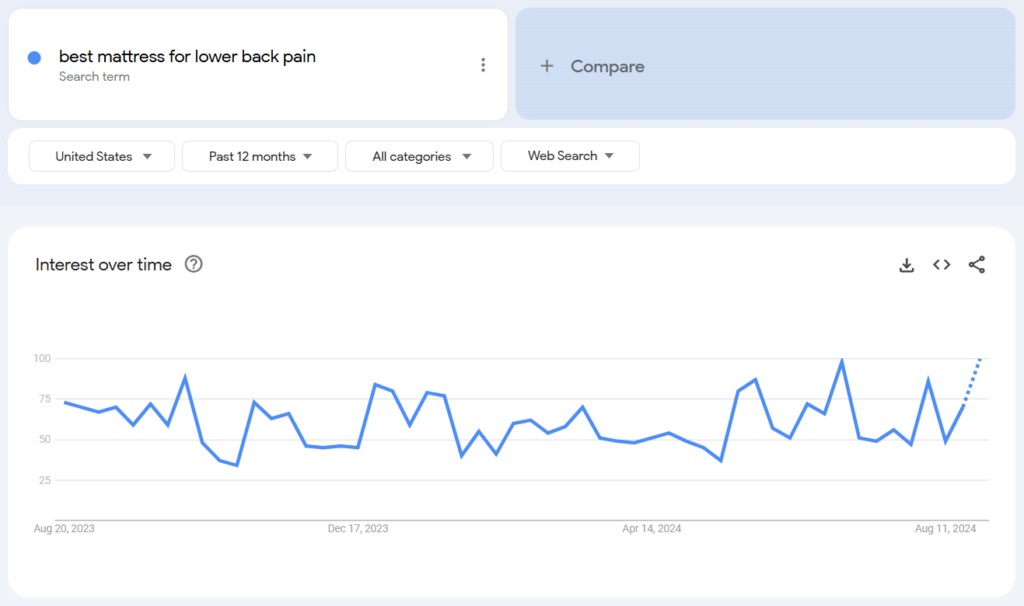
Data source: Google Trends (https://www.google.com/trends)
Once you update the search period, you will see the “Interest over time” line graph and below that, the interest by subregion, or state. This is a high-level view of the states that rank highest for residents Googling to find the “best mattress for lower back pain” — or whatever search terms you input. You can also choose to see this data at the city or metro level via the drop-down menu.
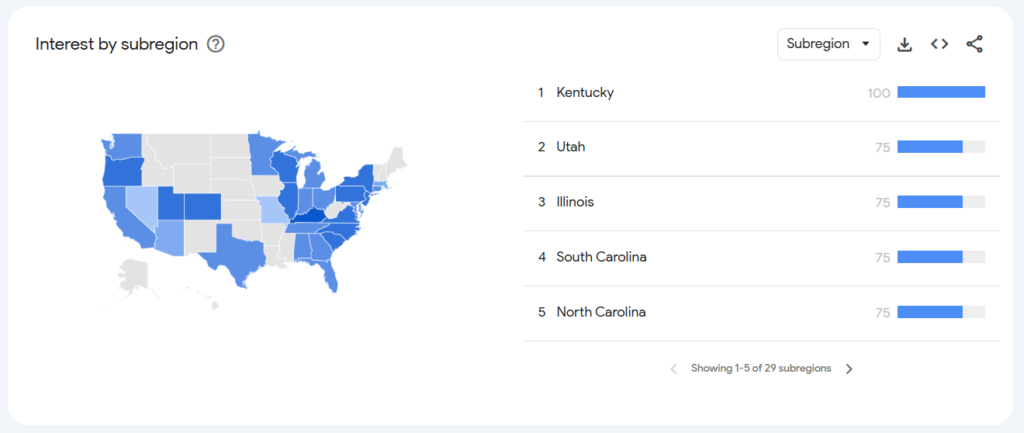
Data source: Google Trends (https://www.google.com/trends)
Below that, you’ll find “Related topics” and “Related queries” that people also search for in relation to the “best mattress for lower back pain.” In these sections, you can see the results by “Rising” — or trending upward — and “Top” searches by actual search volume.
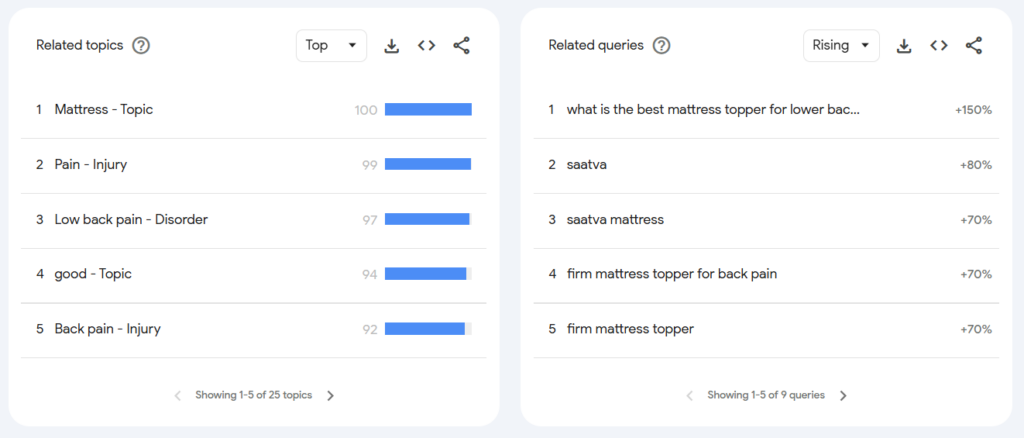
Data source: Google Trends (https://www.google.com/trends)
Another helpful option is to compare two or more different search keywords or phrases. At the top of the results page, you will see a “Compare” option. By adding a second search query, you will essentially see the results layered on top of each other. This is especially helpful to determine which topics and specifications are most important to consumers. For example, let’s compare “best mattress for lower back pain” with “best cooling mattress.” As you can see below, more people are searching for a mattress that will keep them cool at night or better regulate body temperature.
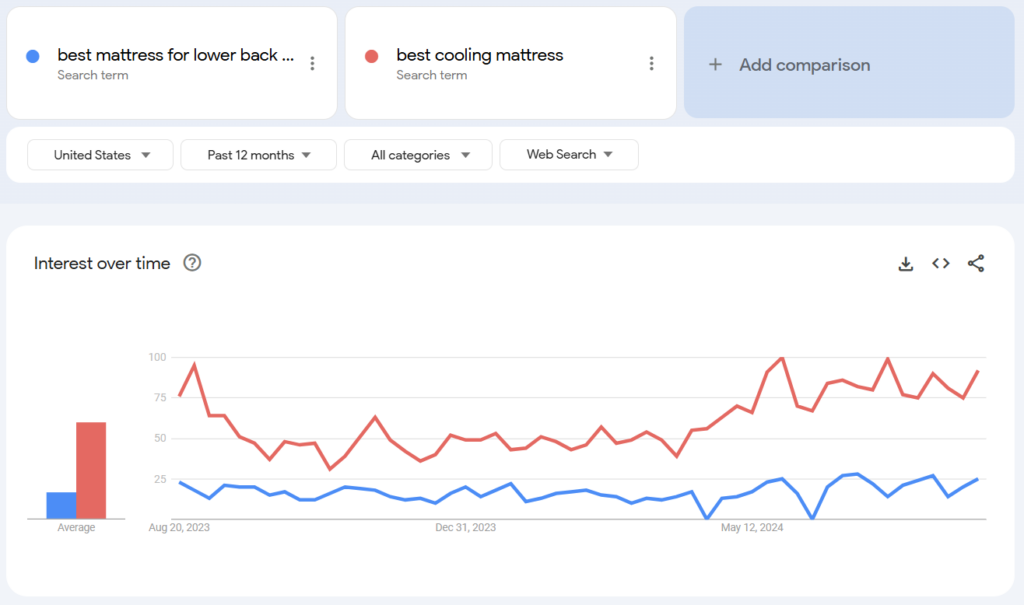
Data source: Google Trends (https://www.google.com/trends)
Overall, Google Trends is a simple, useful tool for determining what’s trending in your area of the U.S. to help guide things like product assortment, in-store displays, social media content and Google ad messaging. As more consumers aim to spend more mindfully, understanding what they truly want or need is especially important to win their business.
Watch the video below for a quick walkthrough of Google Trends to see for yourself how useful it might be. Or if you prefer to read instead of watching a video, click here for a “beginner’s course” on the Basics of Google Trends — created by the Google team.


